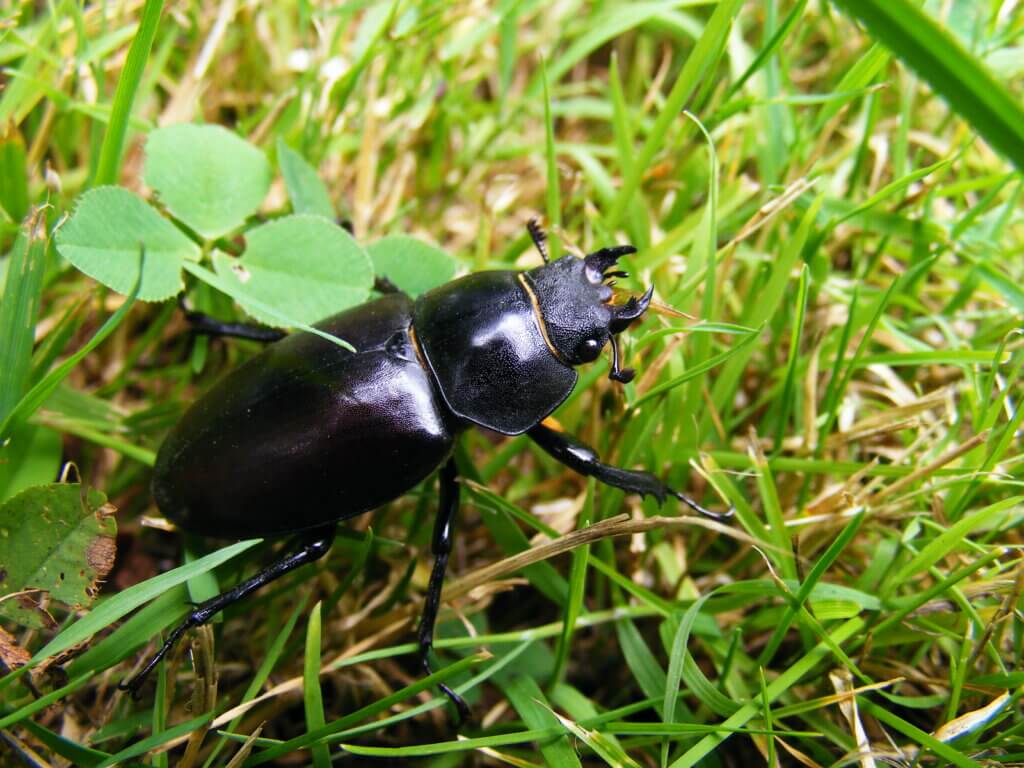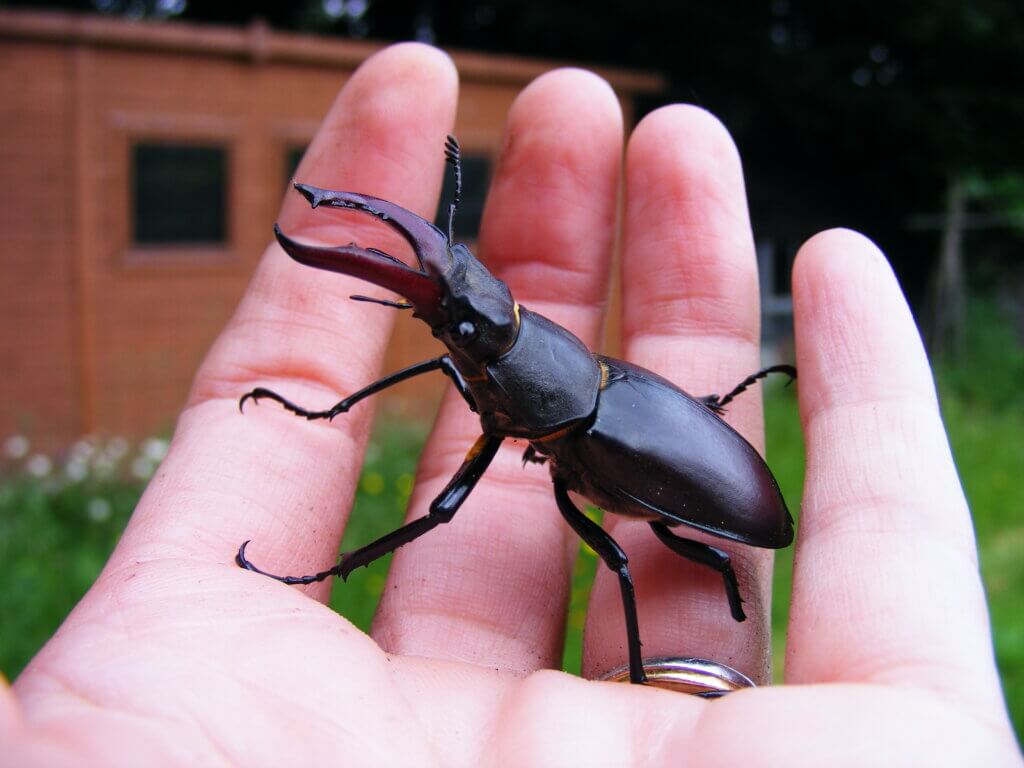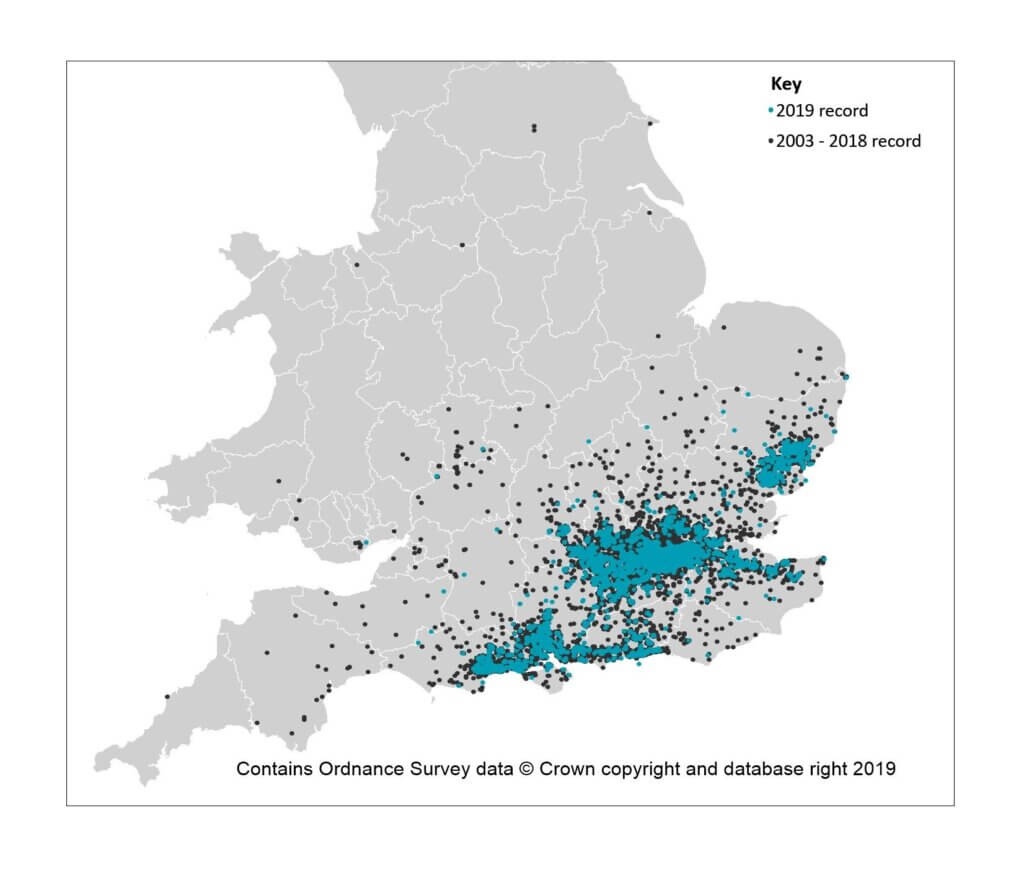
Jane is a naturalist, photographer and nature writer living in Dorset. Her work has appeared in books, anthologies and blogs for charities such as The Wildlife Trusts and the International Bee Research Association. When she’s not exploring Dorset’s lanes and countryside she can be found lying on her stomach watching insects in her garden. Jane’s entry for this blog’s Lockdown Nature-writing challenge was shortlisted and can be found by clicking here. Jane is currently studying for an MA in Travel and Nature Writing at Bath Spa University and can be found: www.janevadams.com and on Twitter @WildlifeStuff
On the basis of Jane’s entry in the Lockdown Nature-writing Challenge, and a couple of guest blogs she has written for this site since (Weevils and Wool-carder Bee) I have persuaded Jane to write a monthly article to appear on the last Saturday of the month, and we start with…

Stag beetles
“We’ve had a lady called Margaret on the phone. She’d like some stag beetles removed from her garden. Can you pop over and see her?”. It was Sue, the volunteer coordinator calling from my local Wildlife Trust. I jumped in my car.
Number 87 Woodland Close sat in a cul-de-sac of detached, perfectly preserved 1970s bungalows. Margaret stood at the door, small, silver haired and dressed in a twin-set and slippers. She was close to tears.
“Thank you so much for coming. You have to take them away. I can’t go into the garden, they’re everywhere”. The words tumbled from her lips as she led me to the back door and then refused to follow me into the garden, watching instead from the ‘safety’ of her kitchen.
To be fair, there were quite a few. In a garden no larger than the width and depth of her bungalow I counted ten stag beetles. Some advanced like dark armoured tanks up the bungalow brickwork, males with antler-mandibles wrestled each other on the patio, while less showy females wandered over the flowerbeds.

At an impressive 30-75mm they’re our longest beetle and totally harmless to humans, but like many other insects they’re having a tough time. Now red-listed* in several European countries, they’re a priority species in the UK, desperately hanging on in hotspots from Dorset to Suffolk, rare or even extinct elsewhere in the country.

I crouched and looked under some of the shrubs growing around the garden’s border. Every few metres there was a rotting tree stump, the favourite home of wood-munching stag beetle larvae and a habitat fast disappearing under hectares of decking, tarmac and gravel. Sadly a diminishing habitat is one of many threats this beetle faces.
Back in the kitchen Margaret poured tea and explained how her husband had cut the trees down more than thirty years ago but hadn’t wanted to remove the stumps as it was too much work. Years later the beetles started appearing.
I hadn’t realised her husband had recently died, and as she showed me an old photograph of a soldier in full dress uniform, medals across his chest, and the clichéd curly moustache of a sergeant major, it was obvious her grief was still raw. “He even used to boss the stag beetles about.” she said.
I reassured her that I didn’t think the stag beetles would be around much longer. It was true, it was the end of June and most of that year’s adults would have emerged. I explained how they didn’t eat once they were above ground, only taking the odd sip of water or juices from fruit or sap, their focus completely on mating and egg laying, before dying a few weeks later.
“Do you really want me to take them away?” I asked.
She considered my question carefully, calmer now after a chat and a cuppa. “Maybe not,” she admitted, “when I see the beetles next year maybe the memories will be less painful”.
Further information:
Credit Map: Distribution map by kind permission of The People’s Trust for Endangered Species (PTES)
*Red-listed. “The IUCN Red List of Threatened Species™ is the world’s most comprehensive inventory of the global conservation status of plant and animal species. It uses a set of quantitative criteria to evaluate the extinction risk of thousands of species.”
Names and locations in this article have been changed to protect privacy. This visit happened before 2020.
Please report stag beetle sightings and take part in the Great Stag Hunt citizen science project at https://ptes.org/get-involved/surveys/garden/great-stag-hunt/stag-hunt-survey/
Find out more about the European Stag Beetle Monitoring Network at https://www.stagbeetlemonitoring.org/
[registration_form]
Lovely wee story and well done Jane.
Thank you Les, that’s very kind of you.
A great article. Engaging, beautifully written, and full of humanity and love for nature.
Thanks so much Sue, your opinion means a lot to me.
I can only endorse the comments of Les and Sue. A very touching story to start a Sunday morning. The loneliness of grief. Educational for me too: I’ll be out – no doubt forlornly if the distribution map is anything to go by – checking the wood-piles of West Glamorgan now, in a minute. Thanks Jane. No pressure, but I’m looking forward to 25th July’s article already.
That’s so kind of you Francis. Thank you. Good luck in your search – I expect you’ll find some great wildlife even if it isn’t a stag beetle. The ruby-tailed wasps seem to be out in the force at the moment (as Paul Leyland wrote about at https://markavery.info/2020/06/21/paul-leyland-ruby-tailed-wasp-2/ ) and they love a bit of rotten wood.
Lovely compassionate blog Jane, I really enjoyed it.